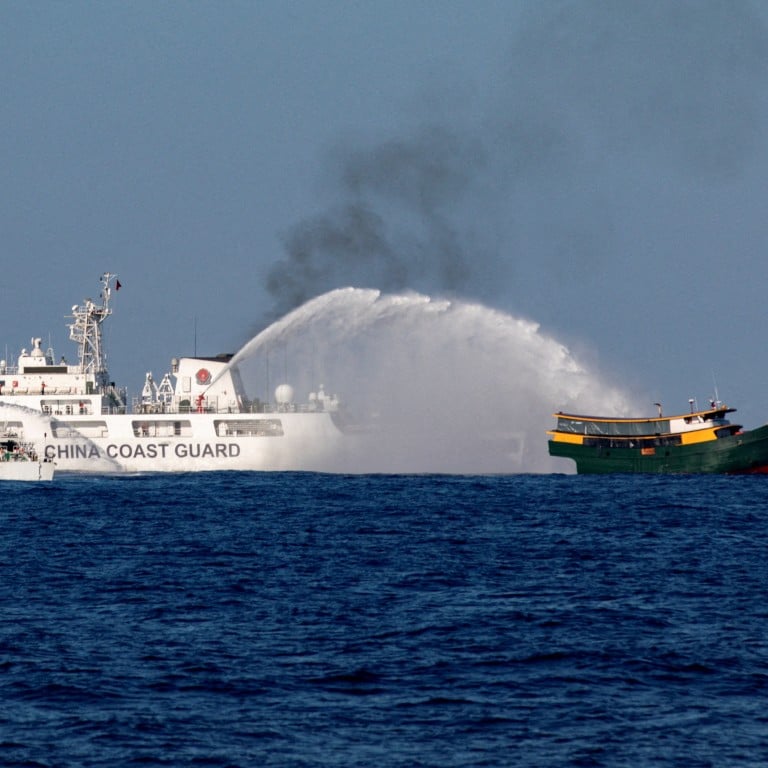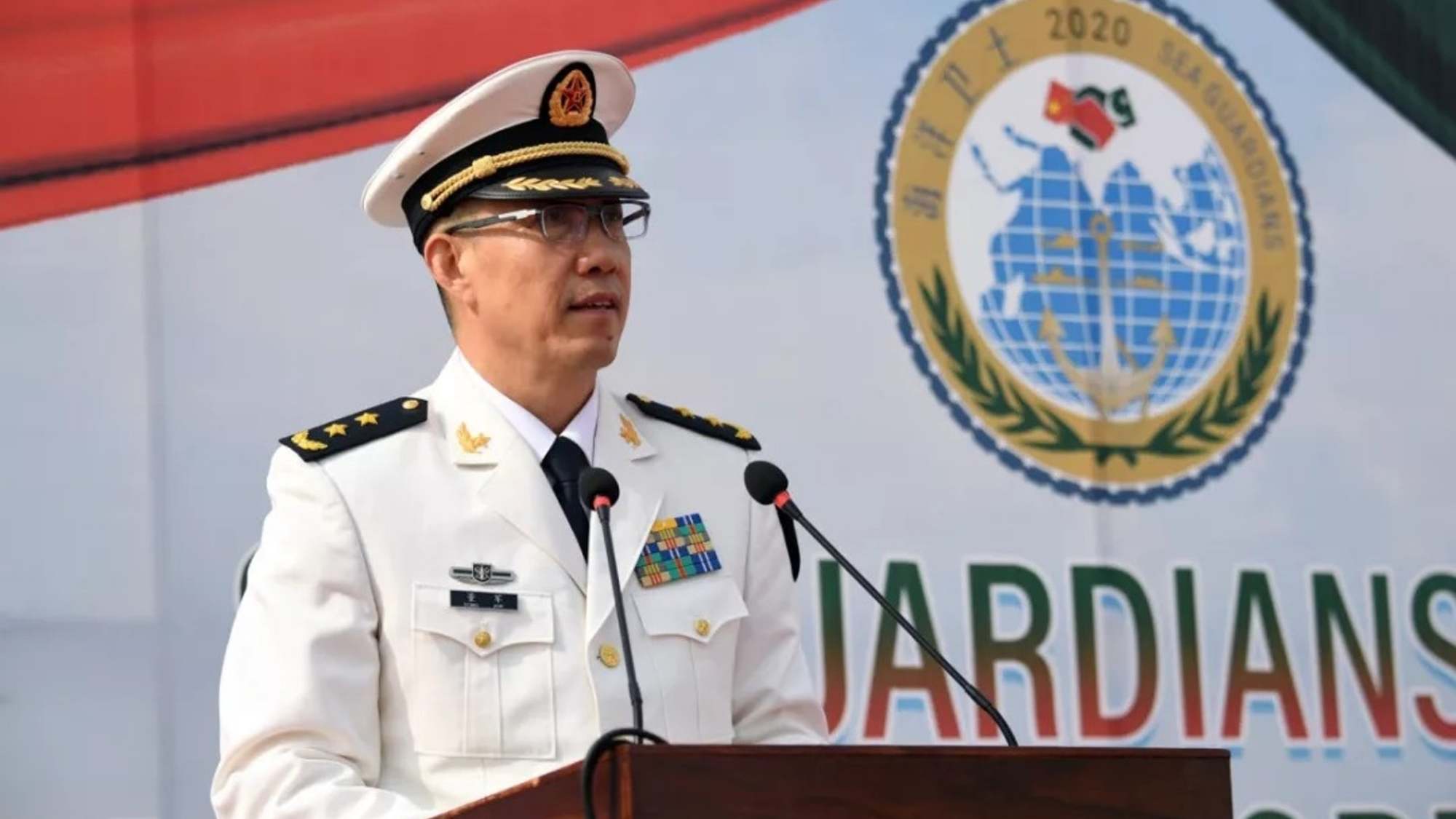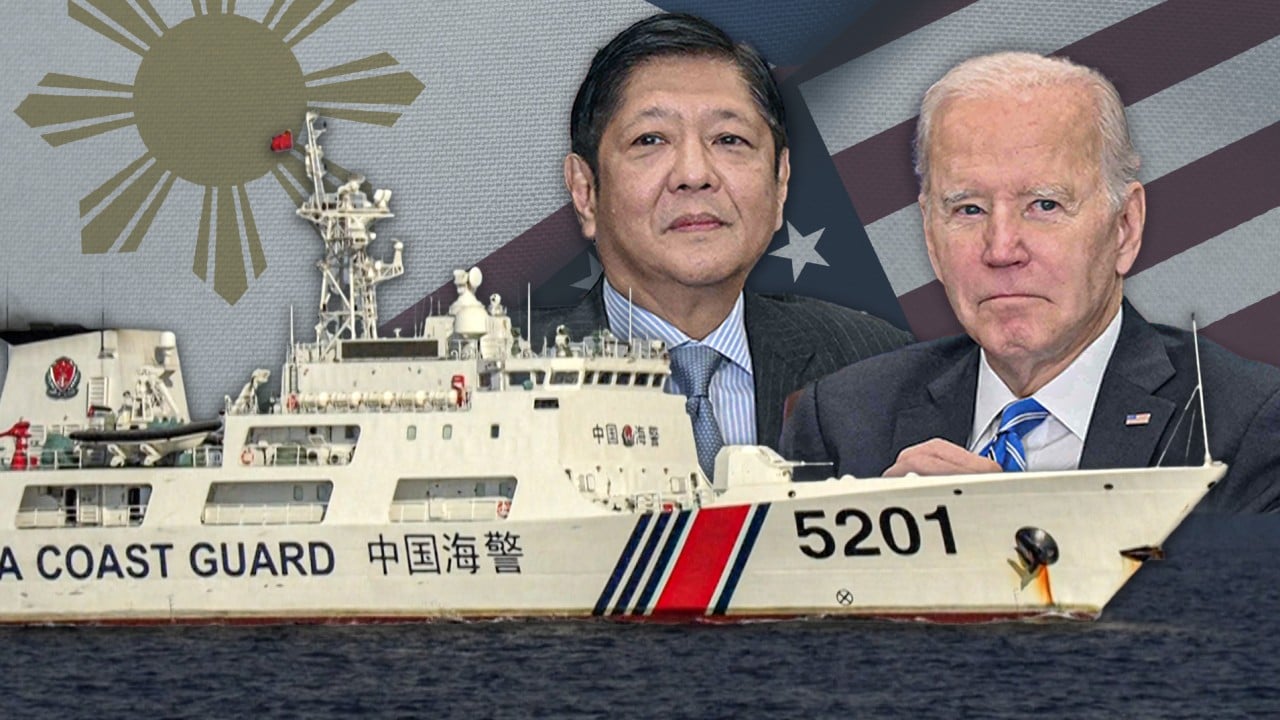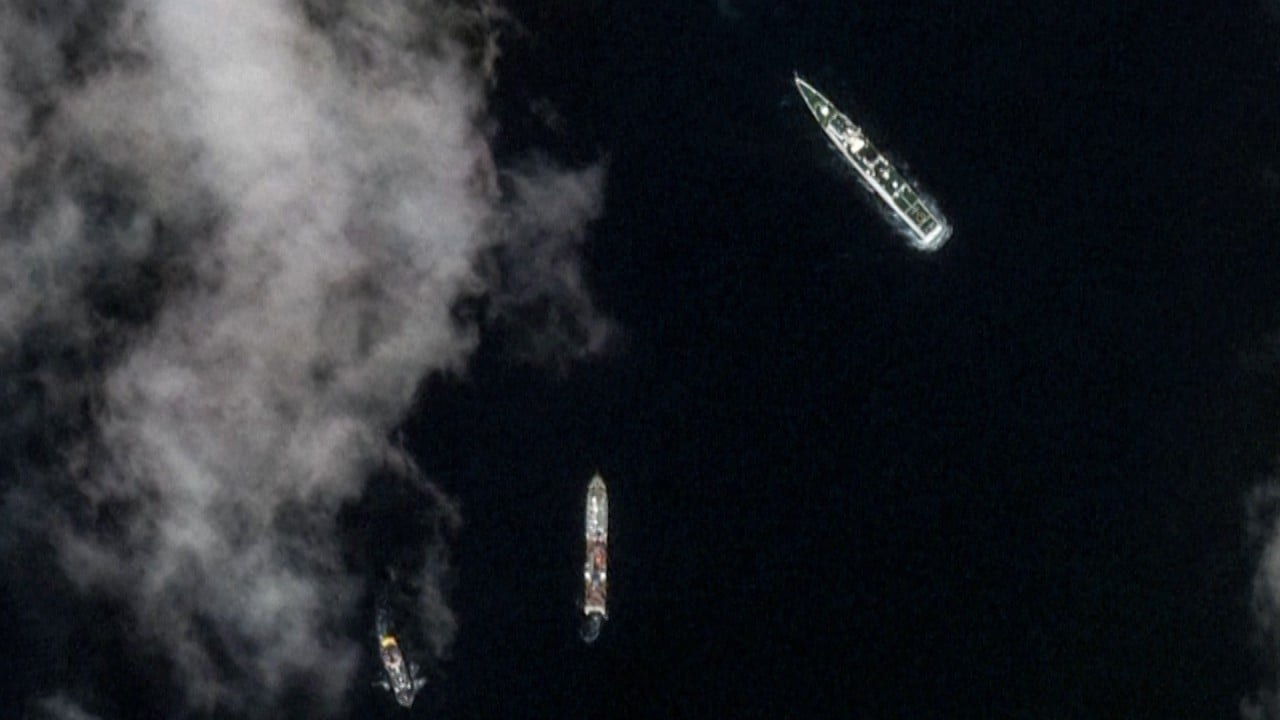
Will US and China change course in South China Sea after defence ministers’ call?
- The call between Dong Jun and Lloyd Austin comes after a series of clashes between the Chinese coastguard and the Philippines, a US ally
- Efforts to restore communications between the two countries’ militaries may prevent things escalating, but analysts doubt either will change their strategy
Dong said Washington should recognise China’s “firm position” on the South China Sea, respect its territorial and maritime rights, and “take practical actions to maintain regional peace and the stability of relations between China and the United States”, according to the Chinese defence ministry.
“The Chinese and US militaries should build a relationship with no conflict or confrontation, open up for pragmatic cooperation, and gradually accumulate mutual trust, and truly serve as a stable cornerstone for the development of bilateral relations,” he added.
China claims most the disputed waters despite multiple competing claims from Southeast Asian countries, including the Philippines.
Furore in Philippines over Duterte’s ‘treasonous’ South China Sea deal with Xi
Recent months have seen repeated clashes between Chinese and Philippine coastguard ships around a disputed reef, which the latter claims as part of its exclusive economic zone. Manila has also strengthened its military relationship with the United States, its long-standing ally.
Tuesday’s video call was the first discussion of its kind between the two countries’ defence ministers since 2022.
In the discussion Austin “underscored the importance of respect for high seas freedom of navigation guaranteed under international law, especially in the South China Sea”, according to the Pentagon, and said US ships and planes would operate “wherever international law allows”.
Analysts do not expect either side to alter their strategy following the call.
“The escalations that we have recently seen in the South China Sea have been deliberately designed by the states so that they can advance their national agendas. A military communication channel will not change that dynamic,” said John Bradford, executive director of the Yokosuka Council on Asia-Pacific Studies and a former US Navy officer.
The Philippines has repeatedly condemned the Chinese coastguard, accusing it of harassing its vessels using water cannons and lasers, but China says it has only taken “necessary measures to protect its territorial integrity and maritime rights”.
Bradford said that “were things to spiral in a direction unintended by the parties” channels that allow the Chinese and US militaries to talk to each other “could provide options” for de-escalating the situation.
“It is hard to build these channels mid-crisis, so the region should be glad they are being restored now when things are heating up, but have not yet flashed,” he said.

China cut off communications with the US in August 2022 in protest at a visit to Taiwan by then House speaker Nancy Pelosi, a trip it viewed as a major breach of its sovereignty. In recent months various communication channels between senior commanders have been restored, including the call between Dong and Austin.
But Stephen Nagy, an international relations professor at International Christian University in Tokyo, warned: “The use of greyzone and hybrid tactics by Beijing are difficult to halt, even with military-to-military communication.”
Greyzone and hybrid tactics employ unconventional tactics – for example the use of water cannons or lasers – to block an opponent’s actions without engaging in open hostilities.
“We are [also] unlikely to see Chinese activities abate as Washington extends its diplomatic and security cooperation in the South China Sea, across the Taiwan Strait and in the East China Sea,” Nagy added.
PLA vows to strengthen war preparation after South China Sea drills
But China sees the US as the main source of tension, according to Song Zhongping, a former instructor with the People’s Liberation Army.
It also warned Manila against “introducing external forces to maintain its so-called own security” as it will lead to greater insecurity.
Song said the South China Sea would be “safe” without US provocations such as these drills or reminders that it would come to the aid of Philippine military ships and planes under the defensive treaty.
“If we want to achieve political and military mutual trust, the United States needs to make greater efforts,” Song said, although he stressed that rebuilding mechanisms to prevent conflict was “a good thing”.

Benjamin Barton, associate professor at the University of Nottingham’s Malaysia campus, said it was also not in Washington’s interests to “see a war break out over maritime claims, no matter how righteous those claims are”.
He added: “I would imagine that much of the language in the call coming from the American side was of reassurance to the PLA [People’s Liberation Army] that the US is interested in keeping the peace.”
The two defence chiefs also discussed Taiwan, another major source of tension between the two countries, and which Dong said was the “core of Chinese core interests”. Austin said the US one-China policy had not changed and stressed the “importance of peace and stability across the strait”.
Beijing regards Taiwan as part of China that must be reunited with the mainland – by force if necessary. The US, like most countries, does not recognise the island as independent but opposes any change in the status quo and is committed to provide arms to help it defend itself.
Hours after the two defence ministers spoke, a US Navy patrol plan flew through the Taiwan Strait. On Wednesday the PLA accused the US of “hyping up the flight”, and said it had “monitored and warned the aircraft, and handled it according to the law”.




